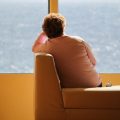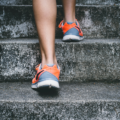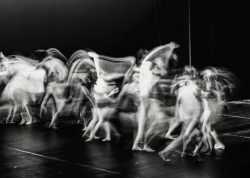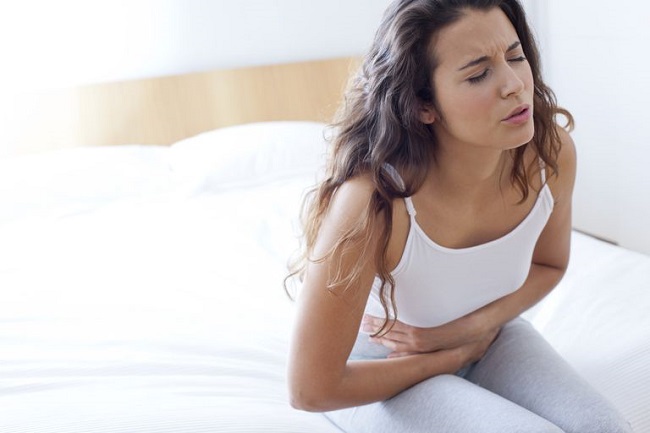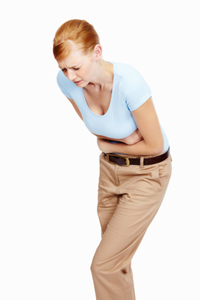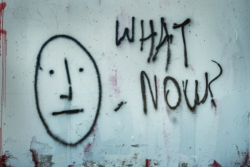Understanding PCOS and Hypothalamic Amenorrhea
Polycystic ovarian syndrome (PCOS) is an endocrine disorder characterized by various signs: irregular periods, anovulation, high androgens, and insulin resistance. Because it is a syndrome, it presents differently in every person. Two women might have PCOS and have completely different symptoms. The signs through which it is often diagnosed will also vary. For instance, insulin resistance is very common, along with excess weight, but someone with no insulin resistance and at a perfectly normal weight could have it as well.
Hypothalamic amenorrhea (HA) is characterized by anovulation and absent periods. With PCOS there is usually one or more hormones that are high, such as luteinizing hormone (LH), or testosterone, in most cases of HA, hormones are low. Hypothalamic amenorrhea is usually present in athletes and women who under eat and/or are underweight. It can also appear in times of acute stress, after a strong emotional shock, but also, due to chronic stress.
Something that not many people talk about is that the two conditions can co-exist. For instance, it is very possible for someone with PCOS to go on an extremely restrictive diet and lose their period as a result. In the same way, someone with PCOS can over-exercise and lose their period, because these women usually have irregular periods, pinpointing the diet or the exercise regime as the cause for the new hormonal imbalance isn’t always easy. Features of one condition can be present in the other, which further proves why looking at the lifestyle of a woman is imperative before setting a diagnosis.
My Battle With PCOS, HA, and Exercise Intensity
I was diagnosed with PCOS a couple of years ago when I got off the pill. In my teens, the condition had been suggested based on ultrasound and symptoms, but I was never told to do any further testing.
At almost 32, I was through with the side effects of the pill: anxiety, depression, low libido, and more. I had been on it without a break for over 12 years and a few more years on and off before that. My cycles were never regular, but the doctor’s only solution was birth control. So far, I’m sure this is nothing out of the ordinary and is in fact something that most women with PCOS experience. My story is slightly different though.
At 8 years old, I was diagnosed with scoliosis, a condition in which your spine curves into an S shape. Due to my young age, there was a huge risk it would progress rapidly, and I would end up needing surgery.
My family wanted to avoid that at all costs. The surgery is not without risks, and the prognosis, at least at that time, over 20 years ago, was not good. The chances of living a normal life post-surgery were small. So, they decided to take a different approach: managing the condition through sports, specifically swimming.
By the age of 9, I had a pretty good swimming schedule. Most of the school year, I would swim 3-4 times per week, an hour a day, and do some gymnastics at home on the other days. Then, 3 months per year I would train intensely, swimming 2-3 hours per day, usually 6 days a week. I loved it, I would have spent all day every day in the water, so I was far from complaining!
Somewhere around the age of 11, I got my period. Right from the start, it was irregular, happening anywhere between 35-60 days. That wasn’t ideal, but I wasn’t having any other symptoms that something was off.
Then, I experienced the first “odd” thing. My swimming season started, and everything proceeded as normal with my many hours spent at the pool. Halfway through, I realized I hadn’t gotten my period in quite some time, way longer than usual. The season ended, and a few more weeks went by, and still no period in sight. Finally, after about 2 or 3 months after the swimming season had ended, I got my period back.
For the rest of the time, I continued with my irregular pattern of 35-60 days. The year went on and the swimming season got back. Guess what? My period vanished again, only to return about 2-3 months after the season had ended.
The pattern repeated each year. Finally, when I was around 15 my mom decided to take me to see a doctor. Again, it was well beyond 3 months since I had had a period. The doctor did an ultrasound and didn’t see anything abnormal, so he decided to put me on the pill. I stayed on it for a few months, then quit, and the cycle of irregular periods, that would completely stop when I was exercising intensely, continued.
I had a few more ultrasounds in the years that followed, at different times in my cycle. During a few of them I had polycystic ovaries, so PCOS was suggested, though an official diagnosis was not made at the time. Also, nobody ever considered requiring blood work for me. Just like nobody ever suggested that the workouts could be the root cause of my missing periods for half of the year.
It was only many years later, while I studied to become a health coach and a fitness trainer that I became more interested in the relationship between hormones and workouts and learned about hypothalamic amenorrhea in female athletes.
Covering Up PCOS and HA with the Pill
When I left for university at age 20, I decided I would stay on the pill. The on-and-off pattern was making me feel less than well. I would always get mood swings coming off it, and I wasn’t having any of that in a new environment.
For the first few years, I was ok, or at least I thought I was. I continued working out, but because I had developed a slight allergy to chlorine, I had to start looking at different sports. I discovered fitness, and later yoga. During many of these years, I continued training intensely. I loved doing it and I decided to become a trainer. Being on the pill, I had no way of knowing if my reproductive system was reacting or not.
It was during those years that I was introduced to the concept of hypothalamic amenorrhea. I remember feeling pretty mind blown that neither my OBGYN nor my GP had ever mentioned it. Nobody had ever even mentioned the risks of HA or taking birth control pills to “cover up” HA.
Coming Off of the Pill and Listening to My Body
A couple of months before my 32nd birthday, I decided enough was enough and I quit the pill. Thanks to all the years of training, plus studying to be a trainer and a coach, I learned to listen to my body. I could feel how it was rebelling more and more against the pill. On top of the health issues, I developed anxiety, panic attacks, and depression that were getting worse and worse out of the blue.
I started doing a lot of research about hormonal health, PCOS, and HA – and I do mean A LOT. I have a PhD. It is in computer engineering, mind you, but the point is I’m a bookworm and research is my middle name. With each new book, or new research article that I read, my mind was blown, but I’m getting ahead of myself.
Coming off the pill, I experienced something very common: my body didn’t know how to restart itself. I went 5 months without a period. My doctor’s answer was more birth control, a different brand maybe. “I only experienced side effects to one brand, they’re not all the same”, she said. Thanks, but no thanks. I’m not going down that road again.
Again, I was faced with the same issue: nobody questioned me about my lifestyle. Someone suggested I go on a low-calorie, no-sugar diet since I have PCOS. They didn’t bother to ask me how much I exercise or even what I currently eat. In case you’re wondering I’m right in the middle of the perfect weight for my height, I have absolutely no reason to go on a low-calorie diet or to lose even one pound.
The Most Dangerous Advice for PCOS: Just Lose Weight
While the low-calorie advice was ridiculous for obvious reasons in my case, and it made me turn my back to that doctor without any remorse, it did shed light on the most common (and most dangerous) advice, women with PCOS receive: just lose weight.
Lose weight, and all your hormonal troubles will go away.
Look, I’m not saying losing weight won’t help some people. What I am saying is that the way this problem is perceived is dangerous and unhealthy. Just look at all the people who saw me, who knew about my lifestyle, who had all the evidence right there in front of their eyes and they didn’t even consider the over-exercise (and subsequent weight loss) that happened when I was training could be to blame.
PCOS Versus HA
Before writing about the changes that helped me, I want to go a bit more in-depth on the two conditions, why they are so easy to confuse with one another, and why having one, doesn’t necessarily exclude the other.
We already know both are conditions that affect the reproductive system. While PCOS is an endocrine disorder with unclear causes, HA is triggered by lifestyle. You can reduce (or worsen) your PCOS through your lifestyle, but that is not the ultimate cause.
Common misconceptions say with PCOS you’ll be overweight, whereas to have HA you need to be underweight. Both are false. Lean women can have PCOS, and normal to overweight women can have HA.
The latest research says you need to have 25+ follicles (commonly called cysts) on your ovaries to have PCOS. That’s because polycystic ovaries can be present in HA as well, though it is rarer.
The fact that restrictive diets, over-exercise, and acute or chronic stress can stop the communication between the hypothalamus and your ovaries, and eventually cause HA is known. Due to their similarities, a constant evaluation of symptoms alongside lifestyle is necessary. Especially when a woman with PCOS begins a new diet or a new workout routine, following her evolution closely for any symptoms that could show her new regime is causing more trouble, is crucial.
You don’t have to go into full hypothalamic amenorrhea (low hormones, no periods, no ovulation attempt) to be impacted negatively by over-exercise. It is, for the biggest part unclear whether I had true HA alongside PCOS, or I was just somewhere in the middle. However, it is undeniable that high-intensity exercise affected me each time. It is also undeniable that as soon as I would take it slow and even gain a bit of weight back, my body would be back to what was normal. I was lucky because I had an offseason that was longer than the training season. If I hadn’t had that, the outcome could have been a lot worse.
Healing PCOS and HA: Nutrition, Low Impact Exercise, and Relaxation
A few months after coming off the pill, I had blood work done and I began working with a naturopath, trying to understand what was going on. As much as I would have liked to be in one category or the other, I didn’t fit anywhere. I had a high LH:FSH ratio, common in PCOS (but not completely excluded in HA). My uterine lining was not building up, also very common in HA and very uncommon in PCOS. My testosterone and DHEA-S were normal, my androstenedione was on the high end of normal. Ultrasound revealed cysts, but not 25+, only about 15. My thyroid was normal, and so was my prolactin. All in all, my tests looked very close to normal, except I wasn’t ovulating.
To recover my health, I decided to take the middle ground. For my PCOS, I went ahead and eliminated foods that I was somewhat intolerant to such as cow’s dairy, gluten, and sugar. I’m not saying this is a cure for everyone, but I have always known I wasn’t digesting these well. I always had inflammation symptoms after eating them in excess including headaches, joint pain, and digestive issues. However, I took a lot of care to eat enough. I allowed myself the occasional treats. For instance, I discovered raw vegan cakes that make me feel amazing and are perfect for my sweet tooth. I didn’t run away from carbs and I made sure I included lots of healthy fats.
With PCOS as my main diagnosis, I was, of course, encouraged to continue my normal exercise routine. At this time, this consisted of HIIT 1-2 times per week, strength training 2-3 times a week, and Ashtanga yoga (a dynamic, strong style of yoga) the rest of the time. Technically it wasn’t much, and it was certainly a reduction considering my background.
I’d been feeling less and less well after HIIT, so I knew something had to change. I decided to go against every advice I’d heard for PCOS and cut back on everything except yoga, which I now do daily. My scoliosis is still very much with me, so doing no exercise at all, which is usually the recommendation in HA, is not an option. I changed the type of yoga and introduced yin and restorative yoga 2-3 times per week.
A few months after deciding to switch to yoga only, I found a medical study proving the benefits of yoga and mindfulness for PCOS. I take it as a sign that we might finally see a change in the constant recommendation to eat less and eat harder, which is mindlessly recommended to most women with this condition.
On top of nutrition and changing my workout routine, I’ve also created a non-negotiable relaxation time. Whether I read, paint, spend time with friends and family or go for a walk outside in nature, I make sure each week my schedule includes relaxation. It has taken quite a few months since implementing all these changes, but I can say my cycles are regular for the first time in my life.
Bottomline: You Can Recover Your Health
If there is one lesson that I’d like you to learn from this story is to listen to your body. Truly listen. Watch out for any changes, both positive and negative, and when you see something negative, take a step back. If you’ve just started exercising and are experiencing amenorrhea, for instance, you don’t have to stop exercising, just take a step back, exercise one day less, do something less intense, or use a lower weight. Like anything, health requires attention.
We Need Your Help
More people than ever are reading Hormones Matter, a testament to the need for independent voices in health and medicine. We are not funded and accept limited advertising. Unlike many health sites, we don’t force you to purchase a subscription. We believe health information should be open to all. If you read Hormones Matter, and like it, please help support it. Contribute now.
Yes, I would like to support Hormones Matter.
Share Your Story
If you have experience with PCOS and/or HA: share your story with us.
Photo by Johanna Steppan on Unsplash.
This story was published originally on August 5, 2020.

